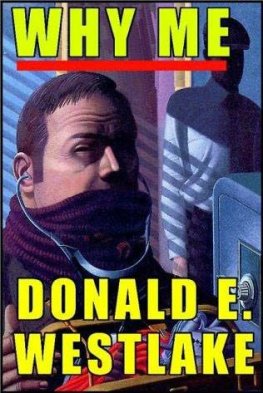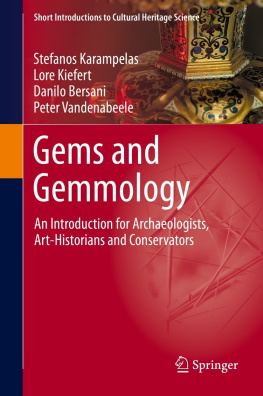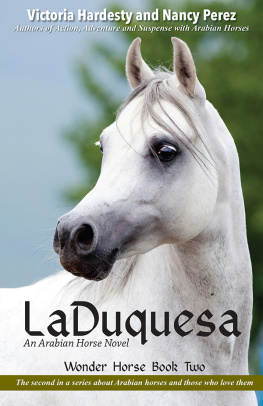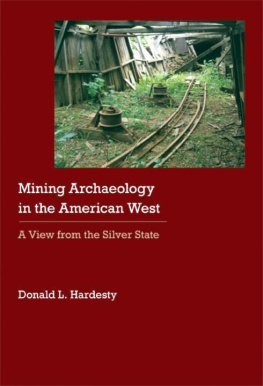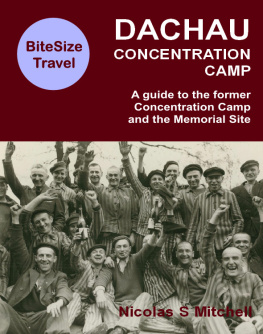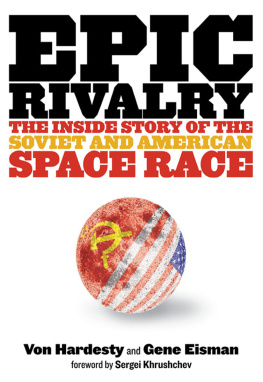Hardesty Donald L. - Assessing site significance: a guide for archaeologists and historians
Here you can read online Hardesty Donald L. - Assessing site significance: a guide for archaeologists and historians full text of the book (entire story) in english for free. Download pdf and epub, get meaning, cover and reviews about this ebook. City: Lanham, year: 2009, publisher: AltaMira Press, genre: Politics. Description of the work, (preface) as well as reviews are available. Best literature library LitArk.com created for fans of good reading and offers a wide selection of genres:
Romance novel
Science fiction
Adventure
Detective
Science
History
Home and family
Prose
Art
Politics
Computer
Non-fiction
Religion
Business
Children
Humor
Choose a favorite category and find really read worthwhile books. Enjoy immersion in the world of imagination, feel the emotions of the characters or learn something new for yourself, make an fascinating discovery.

- Book:Assessing site significance: a guide for archaeologists and historians
- Author:
- Publisher:AltaMira Press
- Genre:
- Year:2009
- City:Lanham
- Rating:5 / 5
- Favourites:Add to favourites
- Your mark:
- 100
- 1
- 2
- 3
- 4
- 5
Assessing site significance: a guide for archaeologists and historians: summary, description and annotation
We offer to read an annotation, description, summary or preface (depends on what the author of the book "Assessing site significance: a guide for archaeologists and historians" wrote himself). If you haven't found the necessary information about the book — write in the comments, we will try to find it.
Assessing site significance: a guide for archaeologists and historians — read online for free the complete book (whole text) full work
Below is the text of the book, divided by pages. System saving the place of the last page read, allows you to conveniently read the book "Assessing site significance: a guide for archaeologists and historians" online for free, without having to search again every time where you left off. Put a bookmark, and you can go to the page where you finished reading at any time.
Font size:
Interval:
Bookmark:
Donald L. Hardesty is professor of anthropology at the University of Nevada, Reno. A native of West Virginia, he moved to Washington, D.C., after high school; worked at the National Bureau of Standards; and attended George Washington University at night, with the intention of becoming an electrical engineer. He first became interested in archaeology during weekend visits to the Smithsonian Institution, eventually moving to the University of Kentucky (B.A.) and then to the University of Oregon (M.A., Ph.D.) to pursue academic training in archaeology. Hardesty has conducted archaeological fieldwork in the American West, the American Southeast, Mexico, and Guatemala and has been the principal investigator of more than sixty cultural resource management projects. He is the author of several books and/or monographs, including The Archaeology of Mining and Miners (1988) and The Archaeology of the Donner Party (1997). Hardesty is a past president of the Society for Historical Archaeology, past president of the Mining History Association, past president of the Register of Professional Archaeologists, and a longtime member of the state of Nevada Board of Museums and History, which reviews National Register nominations.
Barbara J. Little has been with the National Park Service since 1992. Starting in the National Capital Regional office, she then became the archaeologist for the National Register of Historic Places and National Landmark Survey. She is currently an archaeologist in the Washington Office Archeology program, where she is responsible for education and outreach, among other program areas. She became hooked on archaeology after taking field school with Jim Hatch at Penn State University in 1978. She worked on the Archaeology in Annapolis project, writing her dissertation on the historical archaeology of the Green Family and its printing business, partly with the help of a Smithsonian predoctoral fellowship. After receiving her Ph.D. in 1987 from the State University of New York, Buffalo, she taught (and learned a great deal from wonderful students) at both George Mason University in Fairfax, Virginia, and the University of Maryland, College Park. Little is an adjunct professor of anthropology at the University of Maryland, College Park. She is particularly interested in the ways in which archaeological places and collections are valued, recognized, and interpreted. She is coeditor of Heritage of Value, Archaeology of Renown: Reshaping Archaeological Assessment and Significance (2005) along with Clay Mathers and Timothy Darvill. This collection is a call to the international archaeology profession to reengage and reinvigo-rate discussions about site significance and public involvement in evaluation and assessment. She edited the volume Public Benefits of Archaeology (2002), which is a collection of viewpoints on the value of archaeology for the public. Her most recent book is Historical Archaeology: Why the Past Matters (2007), in which she writes about the goals and achievements of historical archaeology and discusses its role in public scholarship.
| Abu-Lughod, Janet | |
| 1989 | Before European Hegemony: The World System A.D. 12501350. New York: Oxford University Press. |
| Adams, Robert McC. | |
| 1996 | Paths of Fire. Princeton, NJ: Princeton University Press. |
| Allen, James B. | |
| 1966 | The Company Town in the American West. Norman: University of Oklahoma Press. |
| Altschul, Jeffrey H. | |
| 2005 | Significance in American Cultural Resource Management: Lost in the Past. In Heritage of Value, Archaeology of Renown: Reshaping Archaeological Assessment and Significance , edited by C. Mather, T. Darvill, and B. J. Little, 192210. Gainesville: University Press of Florida. |
| Amin, Samir | |
| 1980 | The Class Structure of the Contemporary Imperialist System. Monthly Review 31: 926. |
| Ascher, Robert, and Charles H. Fairbanks | |
| 1971 | Excavation of a Slave Cabin: Georgia, U.S.A. Historical Archaeology 5: 317. |
| Bancroft, Hubert H. | |
| 1889 | History of the Life of Simeon Wenban. Chronicles of the Kings. San Francisco: History Company. |
| Barker, Philip | |
| 1993 | Techniques of Archaeological Excavation, Third Edition. London: Batsford. |
| Basalla, George | |
| 1988 | The Evolution of Technology. Cambridge: Cambridge University Press. |
| Battison, Edwin A. | |
| 1966 | Eli Whitney and the Milling Machine. Smithsonian Journal of History 1: 934. |
| Baxter, Jane E. | |
| 2008 | The Archaeology of Childhood. Annual Review of Anthropology 37. |
| Beaudry, Mary C., Lauren I. Cook, and Stephen A. Mrozowski | |
| 1991 | Artifacts and Active Voices: Material Culture as Social Discourse. In The Archaeology of Inequality, edited by Randall H. McGuire and Robert Paynter, 15091. Cambridge, MA: Basil Blackwell. |
| Beaudry, Mary, and Steven Mrozowski | |
| 1988 | The Archaeology of Work and Home Life in Lowell, Massachusetts: An Interdisciplinary Study of the Boott Cotton Mills Corporation. IA, Journal of the Society for Industrial Archaeology 19(2): 122. |
| Beckham, Stephen Dow, and Richard Hanes | |
| 1991 | Barlow Road Inventory Project Phase I: Government Camp to the Second Sandy River Crossing. Report prepared for the Clackamas County Department of Transportation and Development, Oregon City, Oregon. |
| Binford, Lewis | |
| 1983 | In Pursuit of the Past: Decoding the Archaeological Record. New York: Thames and Hudson. |
| Bischoff, Matt C. | |
| 2000 | The Desert Training Center/California-Arizona Maneuver Area, 19421944: Historical and Archaeological Context. Statistical Research Inc., Technical Series 75, Tucson, Arizona. |
| Blakey, Michael | |
| 2001 | Bioarchaeology of the African Diaspora in the Americas: Its Origins and Scope. Annual Review of Anthropology 30: 387422. |
| Bomberger, Bruce, William Sisson, and Diane Reed | |
| 1991 | Iron and Steel Resources of Pennsylvania, 17161945. Multiple Property Submission, National Register of Historic Places, National Park Service, Washington, D.C. |
| Bond, K. H. | |
| 1989 | Company Policy and Alcohol Use at the Boott Mill Housing, Lowell, Massachusetts. Paper presented at the 22nd Annual Conference of the Society for Historical Archaeology, Baltimore, Maryland. |
| Borchert, James | |
| 1982 | Alley Life in Washington: Family, Community, Religion, and Folklife in the City, 18501970. Urbana: University of Illinois Press. |
| Brooks, Allyson, and Steph Jacon | |
| 1994 | Homesteading and Agricultural Development Context. South Dakota State Historical Preservation Center, Vermillion, South Dakota. |
| Burton, Jeffery F., and Mary M. Farrell | |
| 2005 | Tule Lake Segregation Center. NHL Nomination, National Park Service, Western Archeological and Conservation Center, Tucson, Arizona. |
| Byrd, David S. | |
| 1992 | Roads and Trails on the Tahoe National Forest: A Contextual History, 18401940. Cultural Resource Report Number 39, Tahoe National Forest, Nevada City, California. |
| Cabak, Melanie A., and Mary M. Inkrot | |
| 1997 | Old Farm, New Farm: An Archaeology of Rural Modernization in the Aiken Plateau, 18751950. Savannah River Archaeological Research Paper 9. Occasional Papers of the Savannah River Archaeological Research Program, South Carolina Institute of Archaeology and Anthropology, University of South Carolina. |
Font size:
Interval:
Bookmark:
Similar books «Assessing site significance: a guide for archaeologists and historians»
Look at similar books to Assessing site significance: a guide for archaeologists and historians. We have selected literature similar in name and meaning in the hope of providing readers with more options to find new, interesting, not yet read works.
Discussion, reviews of the book Assessing site significance: a guide for archaeologists and historians and just readers' own opinions. Leave your comments, write what you think about the work, its meaning or the main characters. Specify what exactly you liked and what you didn't like, and why you think so.

